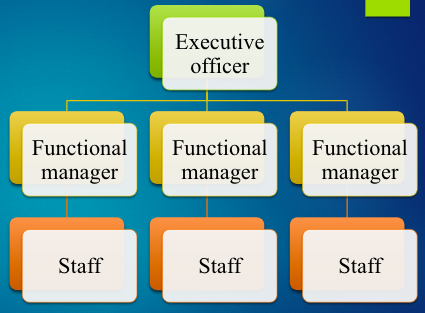Introduction
Aviation is a core element of the modern globalized world. It provides people with an opportunity to reach distant destination areas and supports the development of international cooperation. Moreover, the demand for air travel grows every year, meaning that new airports are built to fulfill this need. At the same time, airport construction is a complex project requiring effective PM and strategies to ensure the necessary infrastructure elements are created and integrated to align the stable work of various units and facilities. The planning should consider the diversity of tasks and responsibilities and ensure the resources are used effectively to work within a timeline. Any big airport plays a vital role in the functioning of the state, communities, and their evolution.
Western Sydney Airport, Australia
Western Sydney Airport is a new construction created by the Department of Infrastructure and Regional Development (Western Sydney Airport, 2021). The project was initiated to meet the growing demand for air travel and ensure the region can handle the traffic, which increases every year (Western Sydney Airport, 2021). The new airport will have several development phases because of the extreme complexity and the need for various infrastructure objects necessary to support its stable work. It is planned to open the facility in 2026 as a large domestic and international hub with a capacity of 10 million passengers a year (Nilson, 2022). The estimated cost is about $3.5 billion necessary to accomplish the goal (Nilson, 2022). It underlines the significance of the construction for the regional economy and traffic.
Navi Mumbai International Airport
Adani Airport Holdings is responsible for constructing a new airport in Navi Mumbai, Maharashtra, India (Panvel | Navi Mumbai International Airport, 2022 ). The country continues its fast evolution, attracting millions of tourists and workers every year. The overall cost is $2.3 billion (Nilson, 2022). It is expected that the airport will be fully operational in 2024, allowing air transportation services to 60 million passengers per year (Panvel | Navi Mumbai International Airport, 2022). It is also one of the international state-of-the-art airports with a unique design and numerous world-class facilities (Nilson, 2022). The project is viewed as the symbol of India’s growing power, and a unique architectural style was created.
Why These Projects?
Western Sydney Airport and Navi Mumbai International Airport were selected for several reasons. First of all, they have unique designs, meaning they can be viewed as objects of art created by using engineering and effective project management methods. At the same time, both projects are critically important for their regions as they will meet the demand for air travel. Furthermore, airport construction requires considering infrastructure objects, local demands, and traffic to ensure they can function (Flouris & Lock, 2016). Moreover, both airports will offer high-class services to passengers, meaning that they can be viewed as a city within a city. It increases the complexity of the task and requires effective PM practices and strategies.
Aspects Worth Attention
The interest in the selected projects also comes from several essential aspects. First of all, both airports must consider existing environmental issues as they will take large areas and might influence flora, fauna, and communities living there. For instance, Navi Mumbai International Airport implied replacing about 3000 families to ensure they would not suffer from pollution (Panvel | Navi Mumbai International Airport, 2022 ). For this reason, these aviation projects are closely associated with biodiversity conservation and sustainability issues. Additionally, the flight path design requires specific attention because of its unique location (Western Sydney Airport, 2021). Finally, the new constructions should be integrated into the existing infrastructure and supply chains, meaning complex logistic tasks should be resolved.
Project Management Knowledge Areas
Airport construction is a complex process requiring cooperation between numerous stakeholders, significant resources, and control to ensure the timeline is observed. It requires effective communication management as the key to successful cooperation. Moreover, projects of this sort might contain numerous risks for workers, meaning they should be addressed. At the same time, safety issues play a fundamental role, as a new facility should ensure passengers are secured. For this reason, the following PM knowledge areas are applicable to the cases and should be investigated:
- Project integration management
- Project time management
- Project scope management
- Project quality management
- Project resource management
- Project risk management
- Project communication and stakeholder management (Project Management Institute, 2021).
Resources
Another critical factor justifying the choice of these projects is the availability of resources that can be used to speak about them. First of all, both airports have official websites describing their peculiarities and features. Second, numerous newspapers discuss the construction process and its major features. Other relevant websites might also offer information about the projects and their specification. Finally, governmental reports might be used to analyze the overall state of aviation and travel demand in the region and the projects’ impact on it.
Project Management Methods
The analyzed objects are characterized by using the Waterfall approach to project management. It is usually viewed as a typical method for construction projects because of several factors. First, it is a highly effective paradigm for tasks with established scope, schedule, budget, and necessary resources (Dykstra, 2018). Both Western Sydney Airport and Navi Mumbai International Airport have their plans, meaning the method is highly applicable. At the same time, the construction implies several stages, meaning it is necessary to move throughout and attain interim goals (Dykstra, 2018). Under these conditions, the Waterfall methodology is employed as the framework for aligning the work and ensuring successful results.

System Structure
The discussed approaches employ the functional project organizational structure as the best possible framework to meet existing needs. It implies that every department has its own functional manager responsible for staff and their work to attain the existing goals (Flouris & Lock, 2016). At the same time, they report to an executive officer who is in charge of the whole project and can distribute tasks and introduce necessary changes (Flouris & Lock, 2016). The given structure is used by both airport projects as it ensures better monitoring, cooperation, and firm control, which is vital for construction processes of this sort and scope.

Conclusion
Altogether, Western Sydney Airport and Navi Mumbai International Airport were selected for the discussion. They are unique construction projects characterized by increased complexity and sophistication. It is vital to consider numerous aspects to ensure they are integrated with the existing infrastructure and can meet the planned goals. The projects use the Waterfall project method to move from phase to phase and achieve interim purposes. Moreover, the functional system structure is employed to create the framework for better cooperation, coordination, and progress monitoring. Further investigation of these projects might help to understand the peculiarities of PM and how its main approaches can be used to attain success.
Reference List
Dykstra, A. (2018) Construction project management: a complete introduction. 2nd edn. New York, NY: Kirshner Books.
Flouris, T. and Lock, D. (2016) Managing aviation projects from concept to completion. London: Routledge.
Nilson, P. (2022) The most expensive airport projects in 2021. Web.
Panvel | Navi Mumbai International Airport – Status, Master Plan & Design (2022) Web.
Project Management Institute (2021) A guide to the project management body of knowledge and the standard for project management. 7th edn. New York, NY: PMI.
Western Sydney Airport (2021) Web.